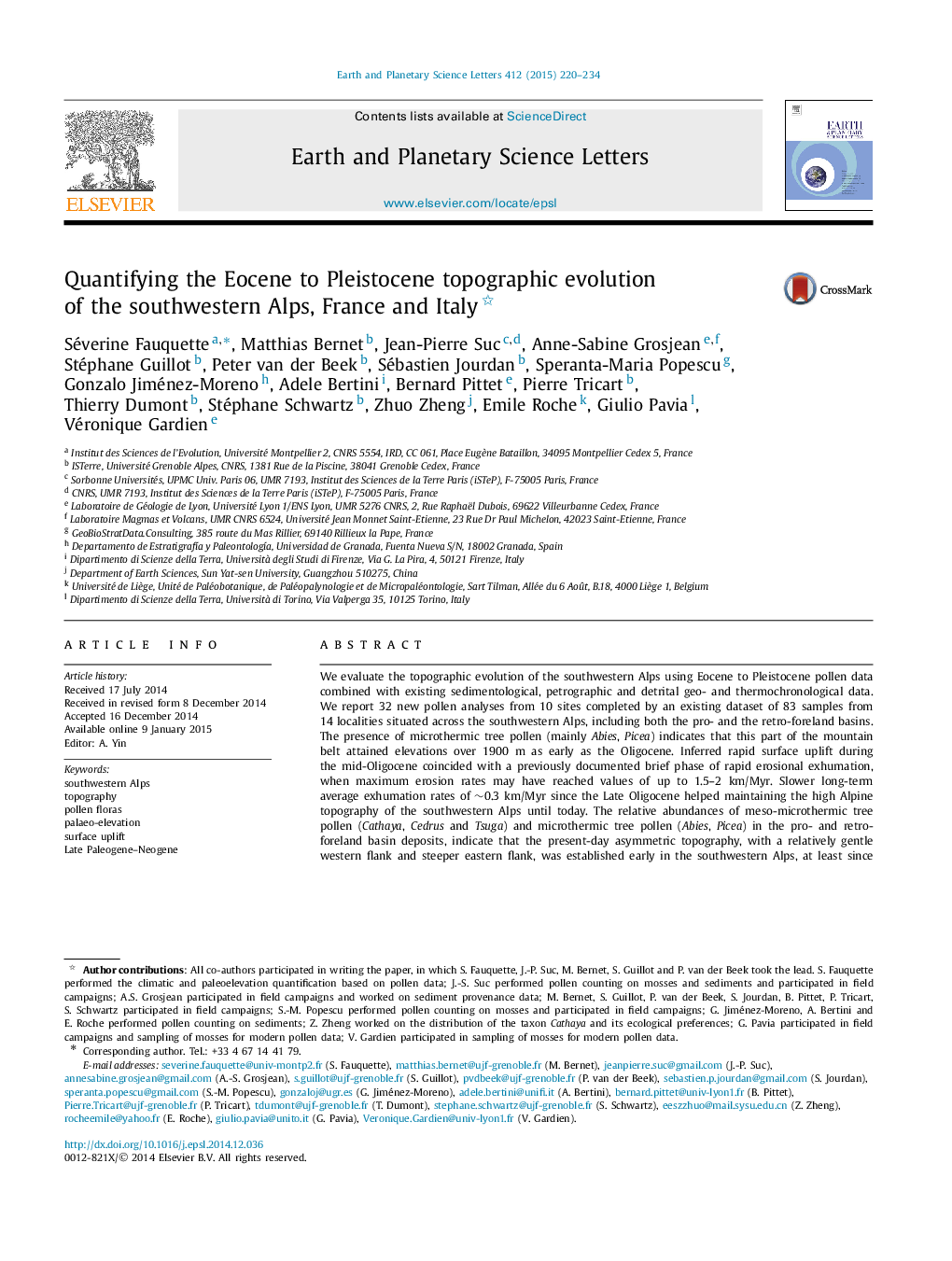| کد مقاله | کد نشریه | سال انتشار | مقاله انگلیسی | نسخه تمام متن |
|---|---|---|---|---|
| 6428658 | 1634744 | 2015 | 15 صفحه PDF | دانلود رایگان |

- Palynological studies are an excellent tool for palaeoaltitude estimates.
- Southwestern Alps have been a high-topography mountain belt over the past 30 Ma.
- This mountain belt attained elevations over 1900 m as early as the Oligocene.
- The asymmetric topography (smoother western and steeper eastern flanks) is ancient.
We evaluate the topographic evolution of the southwestern Alps using Eocene to Pleistocene pollen data combined with existing sedimentological, petrographic and detrital geo- and thermochronological data. We report 32 new pollen analyses from 10 sites completed by an existing dataset of 83 samples from 14 localities situated across the southwestern Alps, including both the pro- and the retro-foreland basins. The presence of microthermic tree pollen (mainly Abies, Picea) indicates that this part of the mountain belt attained elevations over 1900 m as early as the Oligocene. Inferred rapid surface uplift during the mid-Oligocene coincided with a previously documented brief phase of rapid erosional exhumation, when maximum erosion rates may have reached values of up to 1.5-2 km/Myr. Slower long-term average exhumation rates of â¼0.3 km/Myr since the Late Oligocene helped maintaining the high Alpine topography of the southwestern Alps until today. The relative abundances of meso-microthermic tree pollen (Cathaya, Cedrus and Tsuga) and microthermic tree pollen (Abies, Picea) in the pro- and retro-foreland basin deposits, indicate that the present-day asymmetric topography, with a relatively gentle western flank and steeper eastern flank, was established early in the southwestern Alps, at least since the Early Miocene, and possibly since the Oligocene or Late Eocene. Therefore, the high topography and asymmetric morphology of this part of the Alps has been maintained throughout the past â¼30 Ma.
Journal: Earth and Planetary Science Letters - Volume 412, 15 February 2015, Pages 220-234